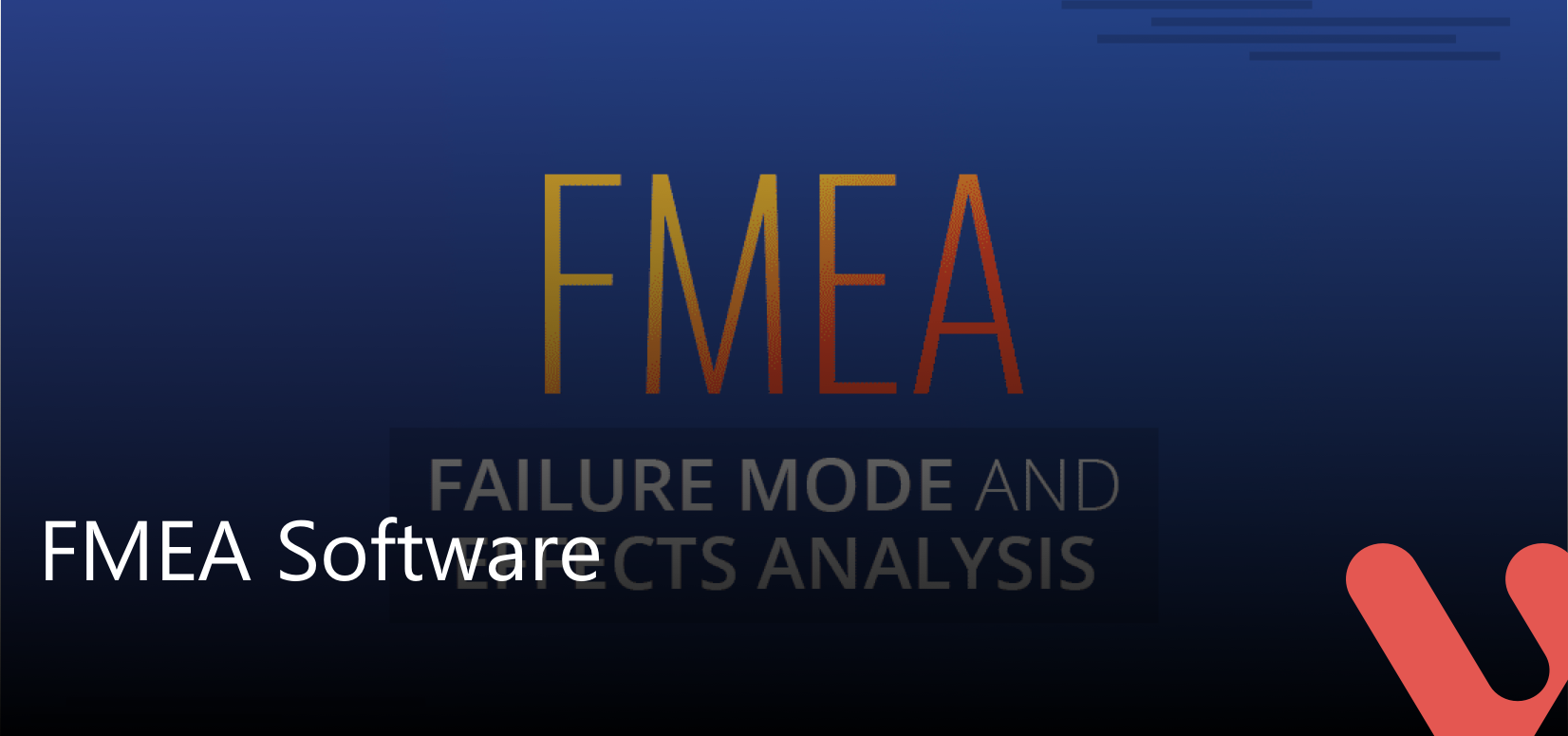Failure Mode and Effects Analysis (FMEA) Software
Regardless of the industry, problems and defects are always expensive, and there are many high-profile examples of manufacturers, software developers, and service providers that were forced to close their doors because they were not able to detect problems and defects early enough.
Those who implement a reliable method that enables them to find problems and defects during the early stages of the development process can save a significant amount of money and avoid reputation-damaging delays to schedules.
Failure Mode and Effects Analysis, or FMEA for short, is a process whose aim is to allow organizations in all industries to identify potential failure modes in a system and their causes and effects during the design stage to ensure that problems and defects never arise in the first place.
What is FMEA Analysis?
The Lean Six Sigma Institute defines FMEA as a risk assessment tool whose purpose is to evaluate the severity, occurrence, and detection of risks to prioritize which are the most urgent. In other words, FMEA identifies potential risks and the parts of the process that must change to eliminate the identified risks.
The first part of this process, failure modes, are how something might fail. The second part of this process, effects analysis, deals with the consequences of those failures. Typically, each failure is prioritized according to its severity, frequency of occurrence, and detectability. Failures with the highest priority should be dealt with first because they have the biggest negative impact.
The process of failure modes and effects analysis can be roughly divided into 5 distinct steps:
- Stage 1: Define the topic and scope of the FMEA.
- Stage 2: Put together a team of subject-matter experts.
- Stage 3: Create a detailed flowchart of the current process.
- Stage 4: At each step of the current process, identify potential failures and classify them.
- Stage 5: Figure out how to prevent the identified failures from happening.
This process is industry-agnostic, and it can be applied just as well in the IT industry as in healthcare, construction, manufacturing, and so on.
Benefits of FMEA
In the previous chapter, we identified the most important benefit of FMEA: its ability to proactively predict failures and prevent them from occurring unexpectedly. However, there are many other benefits of FMEA that deserve to be mentioned.
To start with, FMEA is known to greatly increase customer satisfaction by improving product or process reliability and quality. Customers today have many different options to choose from, and a single failure can convince them to leave for a competitor.
FMEA helps improve testing and development by providing sharp focus and prioritizing product or process deficiencies. Especially when dealing with tight deadlines, it makes sense to target the most significant deficiencies first and leave the less important ones for later. That way, even if the product or service gets released in an unpolished state, the costs associated with late changes won’t be as high as they would be otherwise.
Organizations that embrace FMEA create a culture of problem prevention and proactive problem-solving. When everyone involved understands that problems are preventable, they are far more likely to exchange ideas and collaborate between functions.
Last but not least, FMEA leaves behind a trail of documentation and provides a basis for troubleshooting procedures and performance monitoring. As such, it provides multiple benefits that make it well worth the time and effort.
History of FMEA
Like many other popular business processes, FMEA was originally used by the military. What we now call FMEA was first described in US Armed Forces Military Procedures document MIL-P-1629, which was released in 1949 and revised in 1980.
During the 1960s, FMEA was applied in multiple NASA programs, including Apollo, Viking, Magellan, Galileo, Skylab, and Voyager. In the 1970s, the U.S. Geological Survey started recommending FMEA in the assessment of offshore petroleum exploration, and that’s also when the Ford Motor Company introduced FMEA to the automotive industry.
By the 1990s, FMEA spread into virtually every industry, including healthcare, food service, and, of course, software development. There is now even an extension of FMEA, called failure mode, effects, and criticality analysis (FMECA), which also charts the probability of failure modes against the severity of their consequences.
Different Types of FMEA Explained
There are multiple types of FMEA, but the following three are by far the most common:
- Functional: Also called concept FMEA, this type acts as a precursor to the next two types of FMEA, focusing on global system functions. The goal is to limit functional failures early in development.
- Design: As the name suggests, design FMEA explores the possibility of product or service malfunctions during the design stage. It aims to eliminate all failures before production.
- Process: This type of FMEA focuses on manufacturing and assembly processes and service delivery, examining how the production or delivery process itself affects the quality of the product or service.
FMEA Software
Leading application lifecycle management solutions such as Visure Requirements support different techniques for risk management, including FMEA. Visure Requirements users can tailor the risk management calculation based on their specific needs and quickly get a detailed overview of all potential failures and their severity.

The image above how FMEA looks like in Visure Requirements. Users can enter a brief description of the actions they will be conducted to mitigate the risk of failure, trace risks to requirements, and much more.
Performing Failure Mode and Effects Analysis with a comprehensive application lifecycle management solution such as Visure Requirements removes the administrative overhead of maintaining multiple documents and sharing them between individual stakeholders.
Supporting FMEA with Visure ALM requirement platform
Failure Mode and Effects Analysis (FMEA) helps find problems and defects during the early stages of the development process, which reduces the cost of product or service development and significantly shortens the time to market. Leading application lifecycle management solutions such as Visure Requirements come with built-in support for FMEA, allowing their users to effortlessly identify potential failure modes and their consequences.





